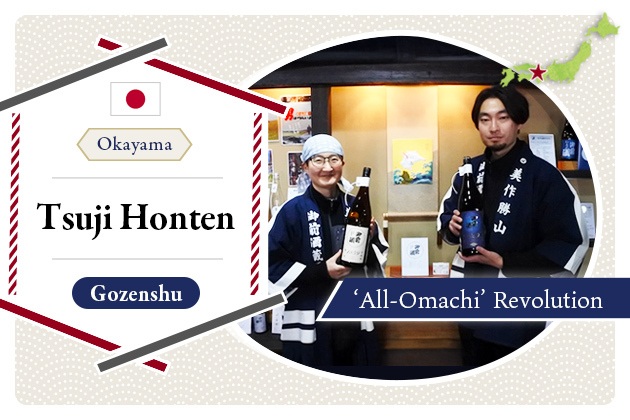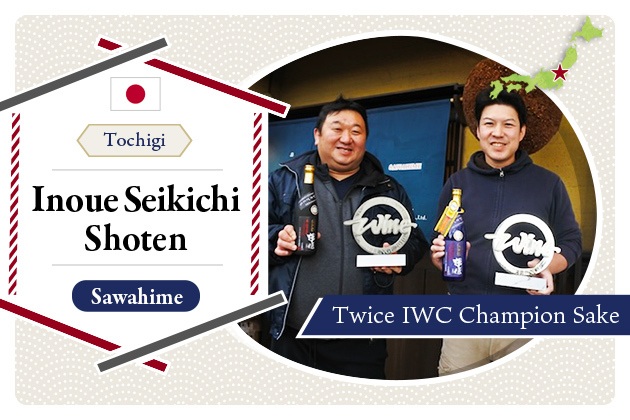
2022.07
23
Sokujo covers 90% of sake brewing: Learn yeast starter making, flavor profile of the sokujo method
Sokujo is a method of yeast starter making along with kimoto and yamahai. As most sake is made using the sokujo method today, few sake drinkers would admit that they have never had sokujo sake. Then again, perhaps not everybody can explain what sokujo actually is.
In this article, we guide you in understanding sokujo better: difference from kimoto and yamahai, how it was developed, and details of its process. Let's take a close look at sokujo, a very familiar method.
What is sokujo?
When brewing sake, before the main fermentation happens in a bigger tank, shubo or yeast starter is made by mixing rice, rice koji, and water. Yeast starter is the basis of sake brewing: it massively cultivates yeast which undertakes production of alcohol. One method to make yeast starter is sokujo.
Related article: What is shubo (酒母)?
Sokujo is a method that involves direct addition of artificially-made lactic acid in yeast starter. By adding lactic acid, yeast starter becomes acid, and prevents propagation of unwanted bacteria and microbes. This allows for multiplying yeast in a stable environment and therefore efficient brewing. It is assumed 90% of sake produced is by the sokujo method.
Sokujo is undoubtedly the mainstream of sake brewing today. However, the method was invented only at the end of the Meiji period (1868-1912). Prior to sokujo, lactic acid was produced by the ambient lactic acid bacteria that lived in the brewery building. This method is called kimoto-style (生酛系), and includes kimoto (生酛) and yamahai (山廃).
Kimoto-style requires the assistance of natural lactic acid bacteria and takes time and labor. Depending on the environment, other bacteria and microbes can propagate before lactic acid builds up, so close management of the yeast starter is necessary.
On the other hand, in the sokujo-style, lactic acid is added to the yeast starter, and there is no need to wait for lactic acid bacteria to produce the acidity. This means the period for making the yeast starter is reduced from about 30 days as is the case for kimoto-style to about 15 days.
Moreover, stable acid environment is formed instantly after adding lactic acid for a quality yeast starter to develop regardless of temperature changes. The invention of sokujo removed much labor off the shoulders of brewers, and opened the door for more stable production of quality sake.
Process of sokujo yeast starter making
Let's look at the process of sokujo yeast starter making, step by step. We will explain the basic sokujo-style.
Day 1: Mizukoji (水麹, koji and water mixture), shikomi (仕込み, mashing), kumikake (汲みかけ, mixing of the mash)
Mizukoji
Place cold water in the yeast starter tank, and add koji, lactic acid, and yeast. Mizukoji's temperature should be around 9-11 degrees Celsius.
Shikomi
Mix steamed rice into mizukoji, and stir the mash. Steamed rice should be cooled to 50 degrees Celsius before being added, so that the mash would result in 18-20 degrees Celsius.
Kumikake
Once the mash is made, a pipe-like device (kumikake-ki) is placed in the middle of the tank. Gradually, liquid into which enzymes have seeped collects in the pipe. Using a dipper, the liquid is scooped and poured around the yeast starter. This activity makes sure yeast permeates the starter mash.
Day 2: Utase (打瀬, cooling)
Yeast starter is kept for a while around 10 degrees Celsius to keep the yeast from over-propagating. This period is called utase, and yeast starter is stirred every 4 to 5 hours to maintain even consistency.
Day 3-4: Hatsudaki (初暖気, first heating) to maedaki-kikan (前暖気期間, preliminary heating stage)
Dakidaru (milk can-like container) that contains hot water is placed in the yeast starter tank to raise the temperature. This heating encourages saccharification.
Day 4-5: Fukure (膨れ, swelling)
Once the temperature rises and saccharification progresses, then yeast propagates by feeding on the sugar. When yeast undergoes alcoholic fermentation, carbon dioxide gas is released; at this stage the yeast starter mash increases in volume and its surface becomes foamy. The first time when the foam starts to develop is called fukure.
Day 6: Wakitsuki (湧付き, start of full-blown fermentation)
After fukure, temperature is further raised to accelerate fermentation. When more carbon dioxide gas is produced, and the surface of yeast starter becomes completely covered with foam, it is called wakitsuki. The following day of wakitsuki, the temperature is raised again to about 20 degrees Celsius.
Day 8-10: Wakitsuki-yasumi (湧付き休み, end of heating stage)
Once the fermentation become vigorous, the temperature keeps around 20 degrees Celsius by the heat of yeast activity without human intervention. The period when the human labor can rest from raising the temperature is called wakitsuki-yasumi.
Day 10: Wake (分け, division)
Yeast starter at about 20 degrees Celsius is rapidly cooled to prevent excessive alcoholic fermentation. If left alone, the vigorous fermentation can lead to extra alcohol and acidity, or higher temperature that can kill yeast.
Day 11 on: Karashi (枯らし, conditioning period)
After wake, the period during which yeast starter is matured until it is used is called karashi. The temperature of yeast starter is maintained low, and is reduced to around 7 degrees Celsius in the end.
Reference: Takeyuki Kurosu, 1998. "Shubo (1)." In Journal of the Brewing Society of Japan, Vol. 92, No. 5.
Variations of sokujo-style yeast starter
For sokujo-style yeast starter, apart from the basic sokujo, the steps of which we described above, there are a few more variations. A simple matrix below shows characteristics of each.
| Variation | Characteristics | Approximate duration of production |
|---|---|---|
| Common sokujo (普通速醸) | Basic sokujo (as described above) | 14 days |
| Chu-on (mid-temperature) sokujo (中温速醸) | A method that sets a higher temperature for mashing and foregoes utase and maedaki, keeping the temperature up to the steps of fukure and wakitsuki. | 7 days |
| Ko-on toka (high-temperature saccharification)(高温糖化) | Yeast starter is prepared at 55 degrees Celsius, which is the optimal temperature for koji's saccharification enzymes, to expedite saccharification at one push. | 7 days |
| Kihaku moto (thin yeast starter)(希薄もと) | Yeast starter is prepared in a thinner consistency than usual and by increasing airflow quantity using pole mashing or a machine, yeast propagation is enhanced. | 7-10 days |
| Cho sokujo (ultra seven)(超速醸) | On the basis of ko-on toka, yeast propagation is intensified by increasing airflow quantity. | 1-2 days |
Characteristics of sokujo-style sake
However, because most sake produced today is sokujo, sokujo-sake has a wide range of variations. How to drink would depend on the brand. As much as sokujo is a controllable method, it could also be said that the brewer's whims can be expressed to result in diverse flavor profiles.
We, then, should judge sake not by the method of brewing such as sokujo, but by looking at various elements such as rice polishing ratio, rice variety, philosophy of the brewer, and so on, in order to find the attractiveness of a particular sake—we suggest that we explore the diverse world of sokujo with an open mind.
Summary
Sokujo-style yeast starter was invented at the end of the Meiji period, enabling efficient and stable sake brewing. Different from kimoto or yamahai, sokujo is unlikely to be affected by external environment including temperature, and allows for brewing delicate sake such as daiginjo in a relatively riskless manner.
Today, approximately 90% of sake is made using the sokujo method. Thanks to this method that minimizes the burden of management and risk of failure, brewers can take risks in other parts and pursue new sake possibilities.
Comparing to kimoto or yamahai, sake labels do not boast of sokujo and consumers rarely think particularly of the method, but it is perhaps one of the greatest inventions of sake brewing that expanded the horizons for the sake world.
Pickup Articles
2019.01.18
2019.01.25
Trending Articles
Popular Articles
Recent Articles













